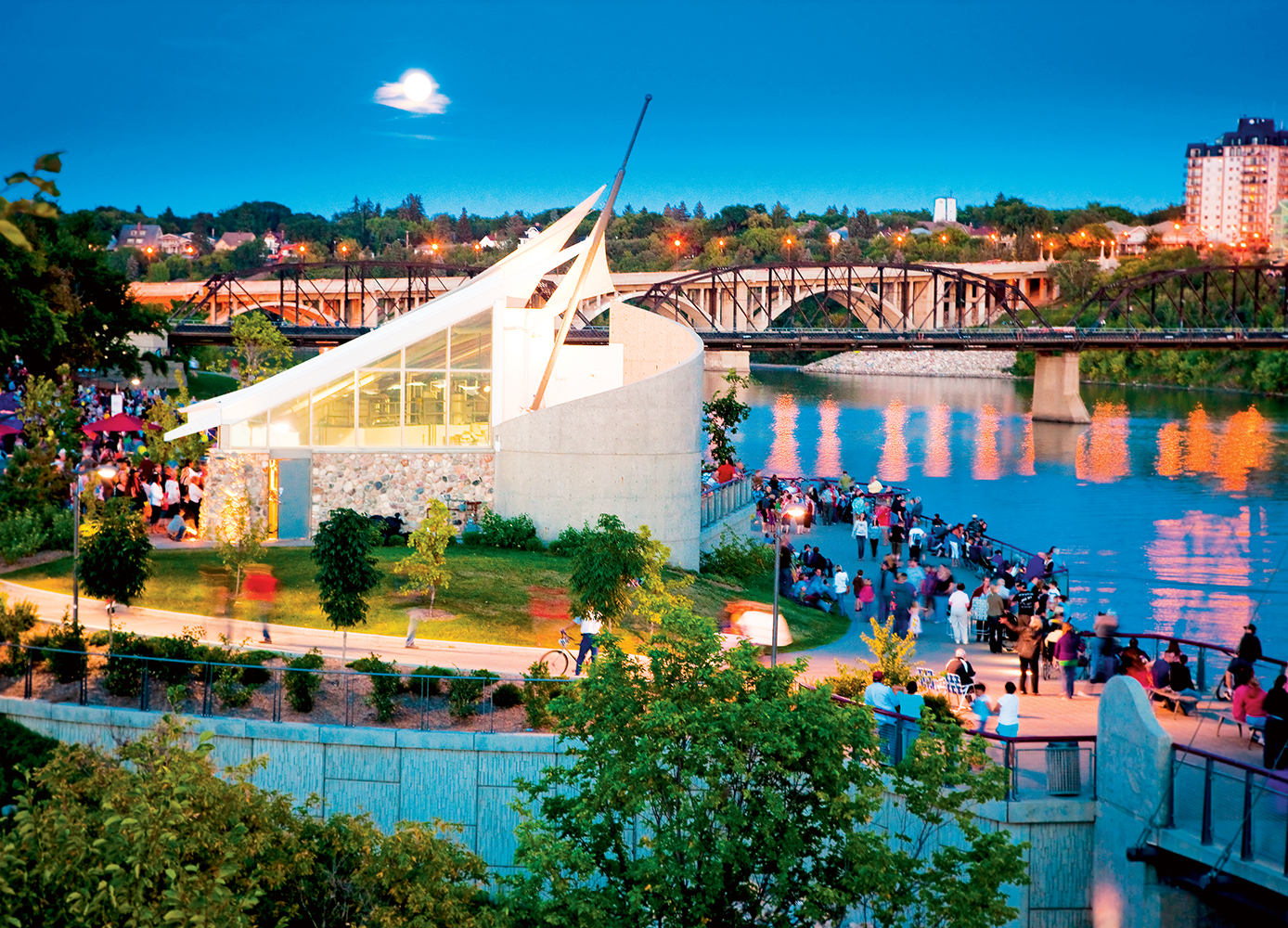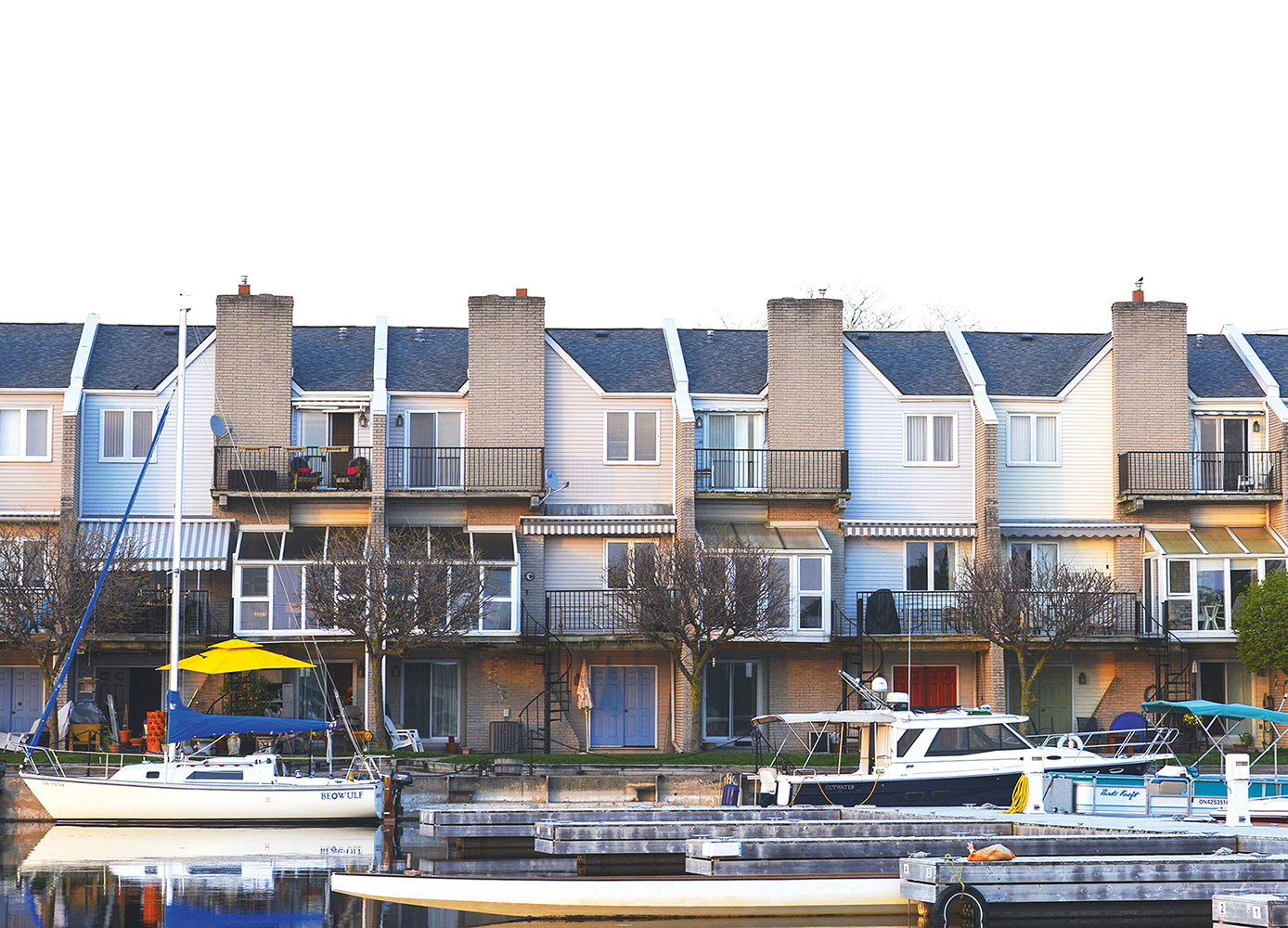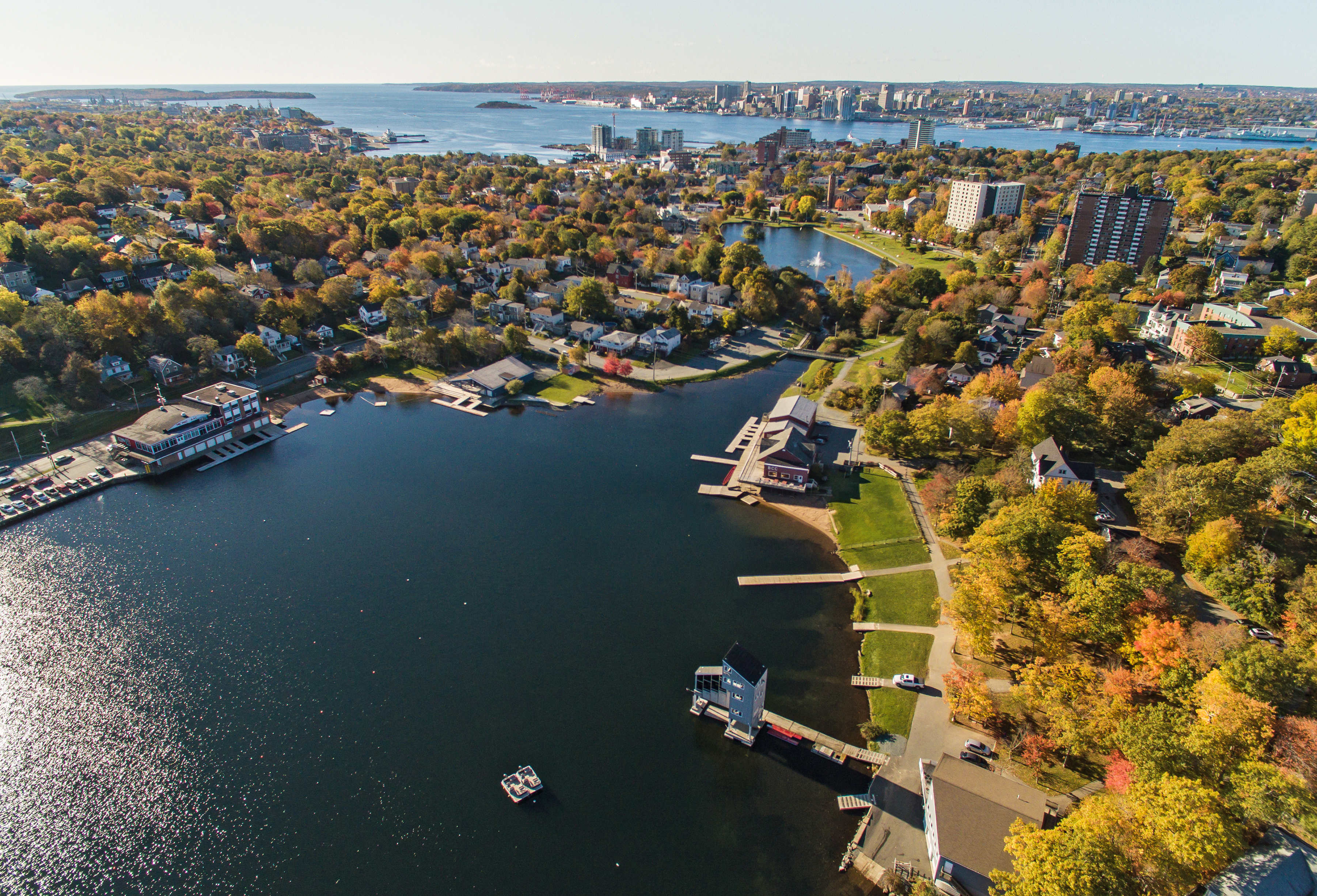Saskatoon is thriving; in fact, it’s the fastest-growing census population centre in Canada
By Wendy Haaf
River Landing. Photo: Tourism Saskatoon.
Saskatoon may be making headlines as a world-class travel destination, but the only Canadian city to appear on the 2018 list of places to visit put out by The New York Times also boasts qualities that make it an appealing place for retirees who want to put down new roots.
Set along both banks of a bend in the South Saskatchewan River and connected by seven bridges, the city of 270,000 lives up to the name of its surrounding valley: Meewasin, the Cree word for “beautiful.” Looking towards the downtown area from the higher cliffs of the east bank, “It’s a lovely view,” says Sheila Clements, who sits on the board of the Saskatoon Council on Aging, a non-profit organization devoted to helping older adults stay active, engaged, and informed. The city’s legendary “living skies” are arresting, too. “Many days, even in the winter, you get this brilliant sun and blue sky,” Clements observes.
With projects such as the ambitious River Landing redevelopment (a mixture of waterfront parkland and residential and retail space, plus amenities such as a bustling farmers’ market and the stunning Remai Modern museum) and the revitalization of older neighbourhoods including Riversdale, Saskatoon is thriving; in fact, it’s the fastest-growing census population centre in Canada. Yet you can still drive from one corner of the city to another in roughly 15 minutes, and real estate is more reasonable than in many other centres in the country, with home prices averaging $334,000 between May 2017 and May 2018.
And though Saskatoon is Canada’s second-youngest city (87.9 per cent of the population is younger than 65), there’s a growing selection of housing options designed for older adults. For example, Crossmount Village is a 400 acre (1.62 square kilometre) rural development tailored for aging in place. The property combines tasteful, fully accessible bungalows and apartments with on-site businesses and services (including a wellness centre and a health-care concierge), and a memory-care village is being planned in collaboration with Dutch experts (the world’s first village built especially for people living with dementia is near Amsterdam).
“It feels like it’s my own home, but somebody else is providing the maintenance,” explains Crossmount Village resident Ernie Barber. “When we want to travel, it’s just lock and go.” Fellow resident Faye McCrimmon adds, “If you need physiotherapy or home care, they set all that up for you.”
And then there’s the tranquil setting: while it’s only a 10-minute drive to downtown Saskatoon, Barber’s property looks out over a horse pasture in one direction and an orchard in another, with foxes, deer, rabbits, gophers, and coyotes making frequent appearances.
High-quality accessible health care is another of Saskatoon’s assets, just a few of the highlights being a medical school, three hospitals, and a healthy supply of physicians (thanks to provincial recruitment and retention initiatives). In addition, Clements lauds the support services and community services (though, as in many other areas of the country, there’s a lengthy wait for long-term care).
For sports fans and participants alike, Saskatoon offers a broad array of choices. “We go to Rush games—that’s our professional lacrosse team,” says Colleen Seaman, a member of the Saskatoon Newcomers Club who moved to the area just over two years ago. “There’s great curling, great hockey, and of course the university has all these sports teams that we haven’t had a chance to get out to see yet. We’re also members of the Saskatchewan Senior Fitness Association, and through that, there’s a lot of organized activities, such as pickleball, curling, and track and field. And the city offers recreation through several different venues for a membership of $45 a month.”
Golfers can choose among a number of courses, and the river is an ideal spot to canoe and kayak. Walkers and runners, too, can pick and choose, from an indoor oval inside SaskTel Centre to hard-surface paths. And the Meewasin Trail—a section of The Great Trail (formerly Trans Canada Trail) that follows the river through a swath of prairie wilderness that lies at the city’s heart—is a marvellous setting for hiking, cycling, and cross-country skiing.
Cerebral and cultural activities are similarly abundant, from courses offered through the public library, the Saskatoon Council on Aging, and the University of Saskatchewan to a long roster of summertime festivals, such as Shakespeare on the Saskatchewan. There’s also a symphony, the opera, and a Ukrainian folk ballet troupe, as well as several theatre companies, including one composed of Indigenous artists and another that performs in French, plus a number of museums devoted to subjects such as native son John Diefenbaker, the area’s aviation history, and its First Nations and Métis heritage. “There’s so much going on,” says Penny Spencer, who moved to Saskatoon from Manitoba after retiring. Like Seaman, she, too, made friends through the Newcomers Club, and she volunteers for a number of organizations.
Long a repository of agricultural riches, Saskatoon has recently earned a reputation as a culinary jewel, too—it was even named Canada’s new “foodie capital” by BCLiving Magazine—thanks to a host of inventive chefs, restaurateurs, microbreweries, and boutique distillers who make use of the bounty offered by local farmers and producers. For instance, The Night Oven Bakery grinds its own organic flours in a custom-built stone mill, using grains grown just down the road.
Overall, Spencer says, “Saskatoon is big enough, but it’s so friendly. It’s a great place to be.”
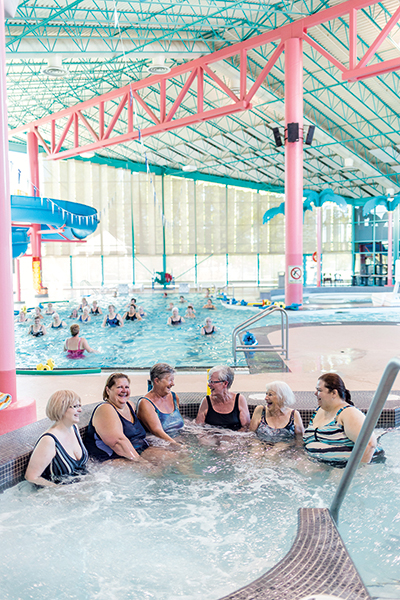
The pool at the Shaw Centre. Photo: City of Saskatoon.
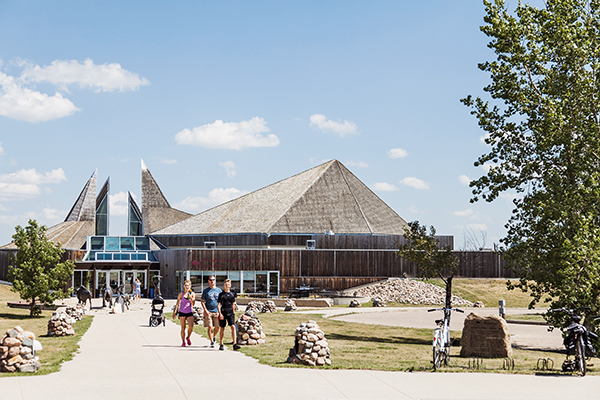
Wanuskewin Heritage Park. Photo: Tourism Saskatoon/Carey Shaw Photography.


